Human-Virus Interactions
Human-virus interactions represent a dynamic and intricate relationship between the host organism and various viral pathogens. At the molecular level, viruses employ diverse strategies to enter host cells, evade immune detection, and hijack cellular machinery for replication. Host cells, in turn, deploy an elaborate array of defense mechanisms to recognize, neutralize, and eliminate viral invaders. Recognition of viruses by the host's innate immune system involves pattern recognition receptors (PRRs) that detect conserved viral structures known as pathogen-associated molecular patterns (PAMPs). This recognition triggers signaling cascades leading to the activation of antiviral responses, including the release of interferons and the recruitment of immune cells. The adaptive immune system, involving T and B lymphocytes, further contributes to specific antiviral responses, generating memory cells for long-term immunity. Viruses have evolved mechanisms to counteract host immune defenses, including modulation of host cell signaling, evasion of immune surveillance, and interference with antigen presentation. Some viruses can establish persistent infections by evading immune clearance, leading to chronic diseases. Research into human-virus interactions encompasses a wide range of viruses, including influenza, human immunodeficiency virus (HIV), herpesviruses, and emerging pathogens. Understanding the molecular intricacies of these interactions informs the development of antiviral therapies, vaccines, and strategies for managing viral infections.

Francis J Castellino
University of Notre Dame, United States
Ranjan Ramasamy
ID-FISH Technology, United States
Saurabh Chattopadhyay
University of Kentucky College of Medicine, United States
Rico Leonardo Lizbinski
Northern Light Health, United States
Sasha Leibholz
New York Presbyterian Columbia/Cornell, United States
Lauren Gruffi
New York Presbyterian Columbia/Cornell, United States



Title : Pathogen-derived noncanonical epitopes: Are they valuable targets for novel vaccinations and shall we be concerned about autoimmune responses?
Michele Mishto, Francis Crick Institute, United Kingdom
Title : Bioterrorism through the ages: Historical perspective, emerging threats, and medical countermeasures
Claudia Ferreira, Sorbonne University, France
Title : Changing population immunity to COVID-19 in the context of infection, vaccination, and emerging SARS-CoV-2 variants
Ranjan Ramasamy, ID-FISH Technology, United States
Title : Extensively drug-resistant bacterial infections: Confronting a global crisis with urgent solutions in prevention, surveillance, and treatment
Yazdan Mirzanejad, University of British Columbia, Canada
Title : Measles vaccination coverage indicators in 2023 and advance towards measles elimination and eradication by 2030
Pedro Plans Rubio, College of Physicians of Barcelona, Spain
Title : Severe influenza and other related respiratory infection cases during Omicron era in Japan
Masafumi Seki, Saitama Medical University International Medical Center, Japan